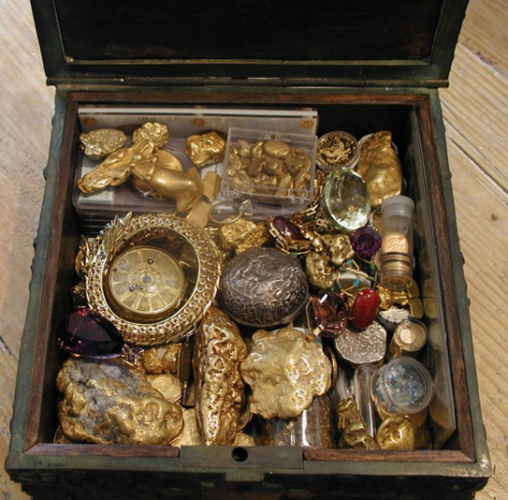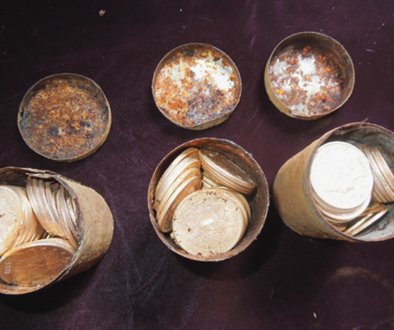Going on a Treasure Hunt—Week 2 of 4
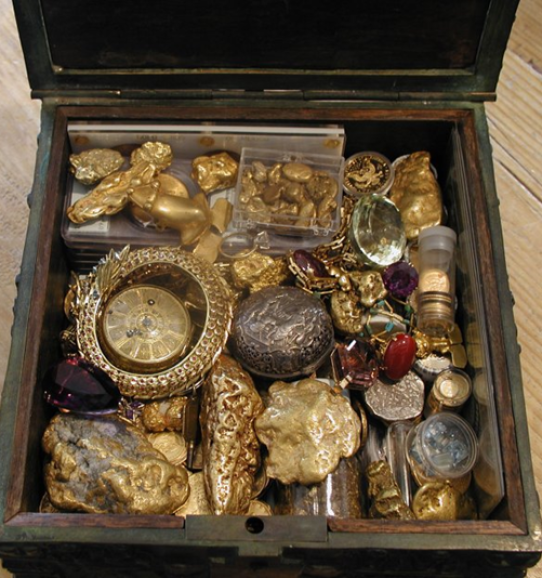
Inside Fenn’s Treasure Chest © AccuWeather
In 1988, Forrest Fenn, a former Vietnam combat pilot was diagnosed with cancer. He assumed the worst. Forrest had settled in Santa Fe, New Mexico and operated an art gallery. At one point during his illness, Fenn had the idea of staging a treasure hunt. Eventually he beat the cancer and in 2010 self- published a memoir called “The Thrill of the Chase.” It was a series of stories about his life. In one of the chapters entitled “Gold & More,” Fenn wrote a poem that provided 9 clues to a treasure he had hidden somewhere in the Rocky Mountains, north of Santa Fe and above 5,000 feet in elevation. Fenn claimed that he had hidden a bronze treasure chest, measuring 10” x 10” x 5” and weighing 22 pounds, that contained $2 million worth of gold nuggets, rare coins, gemstones and jewelry. As people read Fenn’s book, word of the treasure spread and the hunt was on.
Over the next 10 years, hundreds of people searched for the treasure. Five people died during their search. Authorities asked Fenn to stop. He didn’t listen. Finally, in 2020, a former journalist, now a medical student named Jack Steuf, found the treasure. He alerted Fenn, and Fenn himself posted on the internet that the treasure had indeed been found.
Steuf claims that he had figured out the clues in 2018, but it still took another 2 years to locate the chest. Steuf never revealed the location, believing that is what Fenn, who had since passed, would have wanted. In December 2022, Steuf auctioned off the contents of the box, bringing in $1.3 million.
On the website “Treasure in America,” Tim Draper posted an article called “10 Steps to Become a Treasure Hunter.” Draper is a self-described treasure hunter who believes the most important trait for becoming one is that something needs to drive you. Hunting for treasure can be dangerous, as evidenced by the number of people who died looking for Fenn’s gold. It usually involves treacherous landscapes, travel in remote countries, and exposure to elements. After all, if treasure were easy to find, it most likely would have been found already.
In 1992, when scientists first discovered the skull of a saola in a remote Vietnamese village, they immediately wanted to start their own search. The Annamite Mountains, which is the only place on earth where saola are found, are not easy to get around. They are steep, wet, covered in dense rainforest, home to poachers and unexploded ordnance from the Vietnam War.
According to Draper, one of the first steps of any treasure hunt is deciding how you will go about conducting the search. Deciding what methods to use. The scientists turned to one of the most tried and true methods—camera traps.
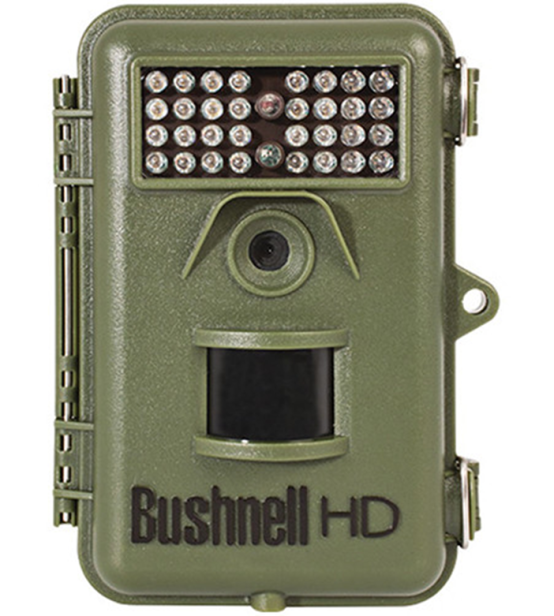
A camera trap is a relatively simple device. It is an infrared-sensored camera that is affixed to a tree or post in the study area. When an animal walks by, it triggers the camera. The scientist shows up a few weeks or months later and retrieves a memory card containing thousands of images of critters, complete with a date stamp. Usually, the camera even has a flash so it can operate 24 hours a day.
Camera traps are used for all kinds of wildlife detection. They can sometimes help determine how many animals are living in a certain area. The stream of pictures can help determine how many males and females there are as well as how many young. They can monitor animal behavior. Video imagery can capture the animal in motion. Camera traps don’t put stress on the animals.
They can also capture images of people, in particular, poachers operating in an area. In some cases, the camera traps can be hooked to the internet and poaching activity can be monitored in real time, allowing ranger crews to be deployed while the poachers are still around.
For the first 20+ years of the search for the saola, camera traps were used in various parts of the range. A few times (no more than a half-dozen times in 30 years, to be precise) ‘the polite one’ was caught on camera. One of the most iconic shows a saola, probably heavily pregnant, standing in a creek, surrounded by the dense jungle. The last image is from 2013, almost a decade ago.
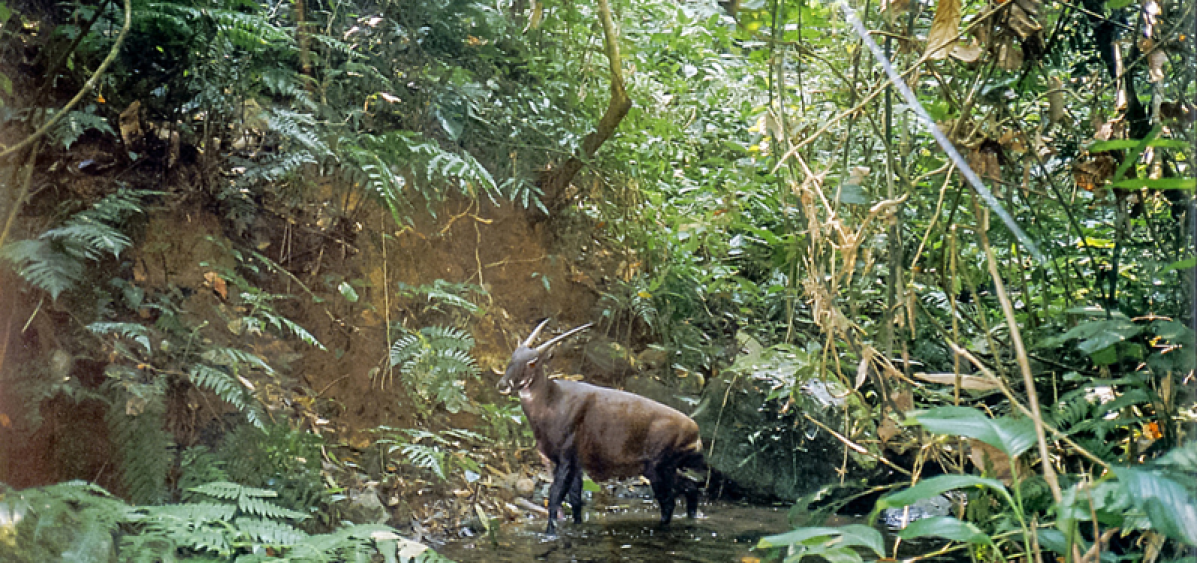
Saola live in an area the size of New Jersey. The jungle there is thick and sight lines might be 20 feet or less. If you were walking through that jungle, you would have to push aside plants and vines, giant leaves and branches. You couldn’t see what’s behind the next tree or over the next rise or down in the gully that suddenly appeared in front of you. The camera trap can’t see any better than you. The subject would have to pass within a few feet of it.
New Jersey covers 5,582,000 acres. If you installed a camera trap every 100 acres, it would still require 55,820 cameras and given the density of the forest, there still is no guarantee that one of only 100 saola would ever pass directly in front of one.
Tim Draper said that one of the first steps in a treasure hunt is determining how you are going to carry out the search. Camera traps are one way to search for the saola, and may be used as a minor part of this search, but it can’t be the only way. Tune in next week to find out the other methods that will result in the finding of the saola.
In order to help pay for two week’s worth of search, I am trying to raise $10,000. My wife and I are putting up the first day-$1,000. I hope you will consider helping to fund the rest. Please visit www.saolafoundation.org to donate.
A picture is worth a thousand words and a thousand dollars is worth one day in the search for one of the world’s most elusive treasures. Thank you to those who have donated already.

